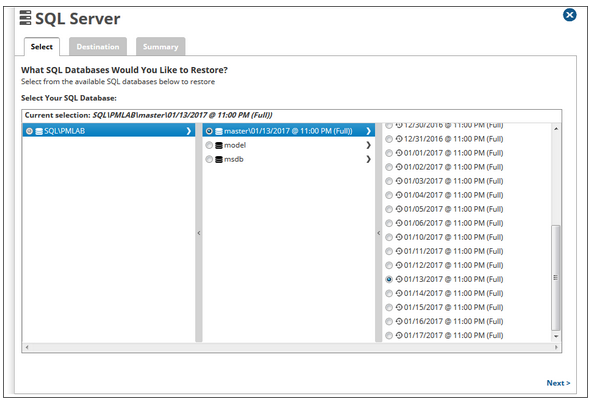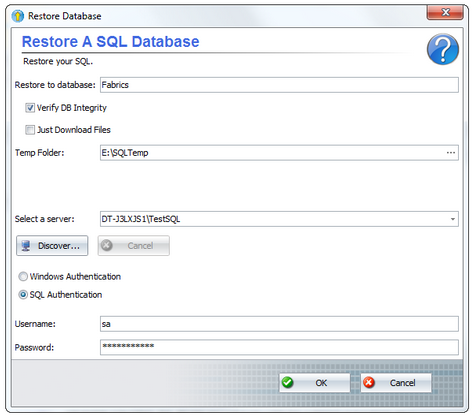Applicable Products
These instructions apply to the following products:
- Barracuda Intronis Backup - MSP
About Restoring a SQL Database
When it comes to restoring SQL databases, you have the option to restore just the (.bak) files or restore directly back into a running SQL instance. Keep in mind that, just like the backup jobs, you will need to have twice the size of the database(s) available, half of that for temporary files.
Restoring SQL Backup Files
Restoring the SQL backup (.bak) files allows you greater flexibility in how you choose to import SQL databases. Once restored, you can use the SQL backup files to restore to separate or multiple instances as well as specify how you want the restore to behave.
- From the ECHOplatform ribbon, select the Manage tab.
- In the Manage screen, navigate to the client account and expand it.
- Click on the computer ID hyper-link.
- Select the Restore tab.
- Click the Restore icon, next SQL Server.

- Click the arrow to the right of a SQL server name to expand the list of databases available to restore, then click the arrow to the right of a database name to expand the list of revisions available to restore.
Select the revision you want and click Next.
Choose the folder you want to serve as the restore destination and, if you want the database restored under a different name, edit the Restore DB Name field.
Finally, click Next to see a summary of the restore or click Restore to begin the restore job.
Restoring Into a SQL Instance
Restoring back into an active SQL instance can currently, only be done in the backup software, not from the management portal.

- Open the Intronis Backup software and click on the Restore tab at the top.
- Under the Browse Remote Databases section, drill down to a SQL instance and the database you want to restore.
Clicking on the database in the left-hand pane should bring up a list of revisions in the right-hand pane; expanding a full backup revision will allow you to see the differential backups available to restore.
Select the revision you want from the right-hand pane and hit Restore.
- In the Restore Database window, select a temp folder which has at least as much free space as the size of the database. Make sure the Verify DB Integrity option is checked and select a server to restore to; if you choose a different server than the one it came from, you may need to provide new authentication credentials. Click OK begin the restore.
